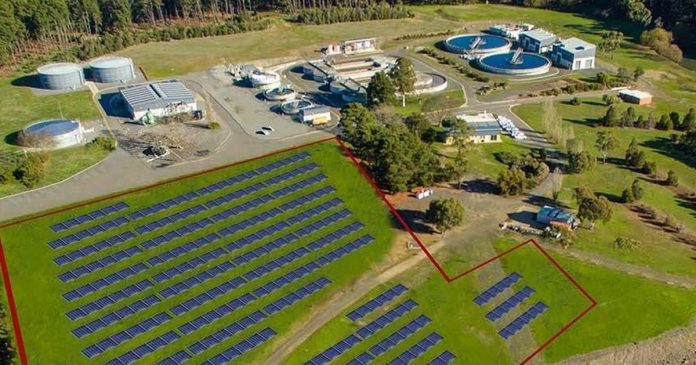Victoria’s Central Highlands Water is increasing its use of solar energy – and its new PV project is thanks in part to people power.
Central Highlands Water has been providing drinking water, sewage, trade waste and recycled water services to customers throughout the Central Highlands region of the state for more than 150 years.
CHW’s community engagement campaign “Let’s Talk Water” revealed improved sustainability of water supply using renewable energy as a major priority among customers – but this needed to occur at no extra cost to them.
This is a can-do given the plummeting cost of commercial solar power and the financial benefits it brings.
“We are pleased to be able to deliver on that goal with this initiative, which is also a step forward in delivering our Emissions Reduction Pledge to reduce greenhouse gas emissions by 20 percent by 2025,” said Central Highlands Water Managing Director, Paul O’Donohue.
CHW has announced five solar projects will generate equivalent to half of the energy needs at four of its water and wastewater treatment plants. The systems will be designed so the majority of the energy produced is used to power the treatment plants, and “from time to time” some will be exported to the grid.
Capacity of these projects hasn’t been mentioned, but combined the facilities will generate 3,500 megawatt-hours of clean electricity per year. Based on that figure and at a really rough guess, this would translate to around 2.5MW of PV capacity.
Central Highlands Water expects the initiative will see a reduction in its overall energy costs of 20%.
Another benefit noted by Mr. O’Donohue – and this is also an important one – is the project will take pressure off the region’s electricity grid and help combat the potential for power outages in peak periods.
This isn’t CHW’s first foray into renewables. It states small-scale roof mounted solar power systems are installed at its Learmonth Road office in Wendouree, and at the Daylesford and Maryborough Water Treatment Plants. There are also mini-hydro electricity generators at Lal Lal Water Treatment Plant and at the Goldfields Superpipe.
Australian Water Corporations Jumping On The Solar Bandwagon
Water delivery and treatment is an energy intensive business and other corporations across the country are embracing solar PV to slash emissions and electricity costs.
One in the midst of a solar panel rollout is Victoria’s Goulburn Valley Water, which is installing 1.9 megawatts of solar capacity spread across 16 systems at sites in ten GVW townships.
Analysis by researchers at University Of Queensland’s School of Chemical Engineering indicated the Australian water industry generated 279 GWh of its electricity from on-site renewables in 2018.






